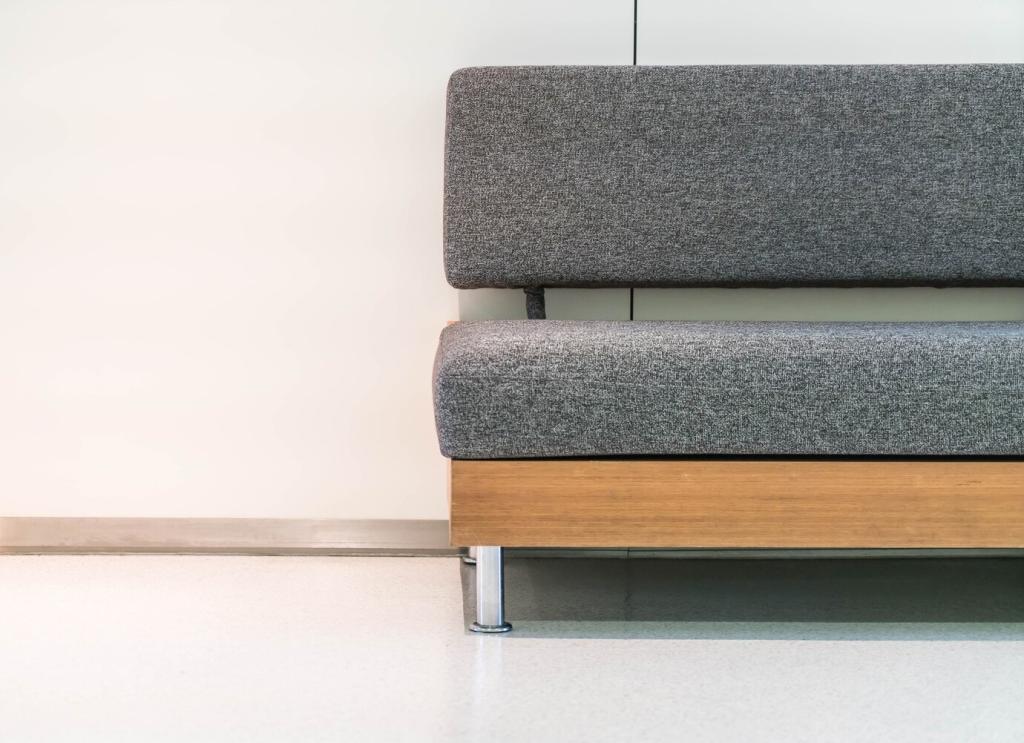
Busting Furniture Care Myths: What Really Works
Selected theme: Debunking Popular Furniture Maintenance Myths. Welcome to a friendly deep dive that clears away bad advice, protects your favorites, and replaces guesswork with simple, science-backed care you can trust. Subscribe and share a myth you want us to test next!
The Shine Trap: Why More Polish Doesn’t Mean Better Care
01
Silicone Build-Up Isn’t a Badge of Cleanliness
Silicone-heavy polishes create a false shine that masks dirt and saturates the finish, making future repairs tricky. Opt for a gentle cleaner and occasional high-quality wax. Have you noticed cloudy smears? Tell us which product caused it and we’ll help decode labels.
02
Oil Isn’t Always Loyal to Your Finish
Unnecessary oiling can soften finishes and trap dust, especially on sealed wood. Before reaching for oil, identify the finish—varnish, lacquer, or oil-rubbed—so care matches the surface. Comment with your wood type, and we’ll recommend a precise cleaning routine.
03
The Tissue Test: A Quick Way to Spot Residue
Wipe a hidden area with a white tissue after polishing. If you see grayish film or tackiness, product residue is lingering. Switch to microfiber and a pH-balanced cleaner. Tried it today? Share your results and your polish brand for crowd-sourced insights.
Vinegar’s Acidic Bite Can Etch Finishes
Undiluted vinegar is too harsh for many wood and stone finishes, leading to dullness or streaks. If you must use it, always dilute and spot-test. Better yet, use a cleaner designed for your surface. What’s your go-to dilution? Share it; we’ll sanity-check it.
Olive Oil Leaves Furniture Tasting Like Dust
Olive oil doesn’t cure; it stays mobile and attracts airborne dust, creating sticky patches that darken unevenly. For luster, use a hard-drying wax or manufacturer-approved conditioner. If olive oil “worked” for you, describe the room’s dust levels—context matters.
Baking Soda Abrasion: Micro-Scratches You Can’t Unsee
Baking soda’s mild grit can abrade soft finishes and plastics, leaving micro-scratches that catch light and grime. Try a non-abrasive cleaner instead. Did baking soda haze a surface? Post a photo story and we’ll guide a safe restoration step-by-step.


Steam Isn’t a Universal Stain Savior
Steam can set protein stains and shrink delicate fibers. Always check the fabric code—W, S, WS, or X—before applying moisture. For many sofas, gentle blotting and solvent-based cleaners are safer. Drop your fabric code below, and we’ll suggest a verified method.

Sunlight Fades Faster Than You Think
Direct sun subtly bleaches fabric and dries leather, especially near big windows. Rotate cushions and use UV-filtering shades. Weekly habit, huge impact. Share your sunniest corner, and we’ll recommend protective moves that still keep your room bright and inviting.

Blot, Don’t Rub: A Small Move, Big Save
Rubbing spreads pigment and frays fibers, turning a dime-sized spill into a dinner plate disaster. Blot with a clean microfiber, work from outside in, then use the right cleaner. Tell us your last spill saga—we’ll translate it into a personalized response plan.

Saddle Soap Isn’t a Daily Driver
Saddle soap can strip modern finishes and over-dry furniture leather. Most aniline and protected leathers prefer a pH-balanced cleaner and a breathable conditioner. Check your leather type, then condition sparingly. Unsure? Describe the texture and sheen; we’ll help identify it.
Coconut Oil: The Slippery Slope to Stickiness
Coconut oil oxidizes and can darken leather unpredictably, leaving a tacky film. Use a professional conditioner formulated to penetrate without residue. If you’ve tried coconut oil, how did it look after a week? Share honest results to inform fellow readers.
Color Transfer Isn’t Wear—It’s Chemistry
Denim dye and dark garments migrate onto light leather under friction and humidity. Protect with a repel treatment and clean transfer promptly. Got stubborn blue tints? Comment with a close-up description, and we’ll outline a safe, incremental cleaning protocol.
Metal, Glass, and Stone: The Polishing Pitfalls
Powder cleaners and rough pads scour brass, stainless, and aluminum, creating fine scratches that dull reflections. Use soft cloths and non-abrasive polishes. Have a tarnish tale? Share your metal and finish, and we’ll advise a gentle restoration routine.
Metal, Glass, and Stone: The Polishing Pitfalls
Ammonia-based sprays can cloud lacquered frames and degrade mirror edges over time. Spray the cloth, not the surface, and keep moisture away from seams. What streaks are haunting your glass? Tell us, and we’ll tweak your technique for crystal clarity.
Metal, Glass, and Stone: The Polishing Pitfalls
Lemon, wine, and vinegar etch marble instantly, leaving dull rings. Seal regularly, wipe spills fast, and use neutral pH stone cleaners. Share your countertop mishap and how quickly you cleaned it; timing often determines whether etching or a simple polish follows.
Microfiber and Light Moisture Are a Dream Team
Dry dusting just relocates particles; a lightly damp microfiber lifts and traps them. Follow with a dry cloth for a streak-free finish. What cloths are in your drawer? Tell us your setup, and we’ll suggest an effortless weekly routine.
Rotate, Rest, Recover: Cushion Care That Works
Flipping and rotating cushions distributes wear, preserves loft, and prevents lopsided silhouettes. Set a monthly reminder and thank yourself later. Share a before-and-after of your most-used seat—we’ll cheer your wins and offer fit-specific fluffing tips.
Humidity Is a Silent Hero for Wood
Wood expands and contracts with humidity swings, causing cracks and wobbly joints. Keep indoor humidity stable, ideally between 40% and 55%. What’s your climate challenge? Comment your region, and we’ll tailor seasonal care to protect your favorite pieces.
